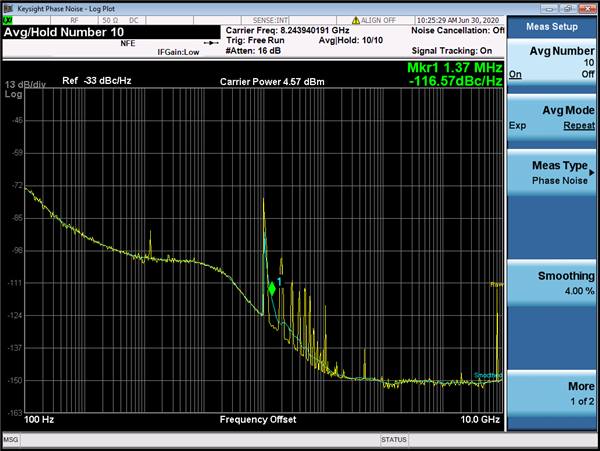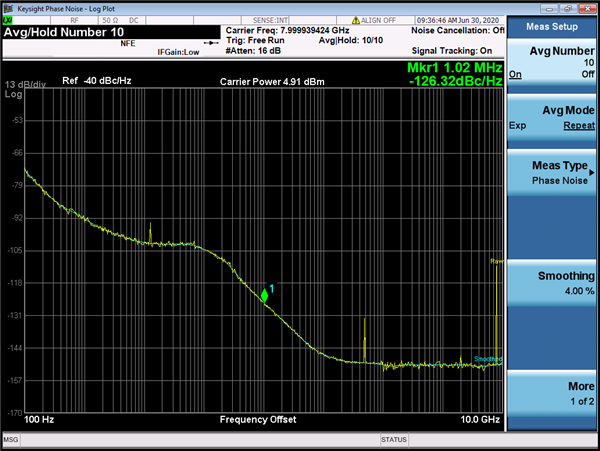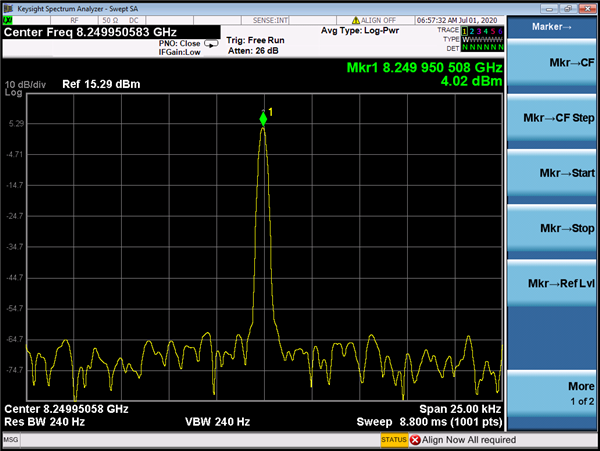Other Parts Discussed in Thread: TIDA-01410
Hi,
on my (selfmade) testboard for the LMX2594 I measured a big difference in spurious for integer vs. non-integer mode:
Non-integer mode:
Integer mode:
Here you can finde the settings in TICS Pro (non-integer mode):
The goal is to produce an output frequency of 8.244 GHz. How can we reduce the spurious for this frequency?
Thank you very much in advance.
Best regards
Joachim






